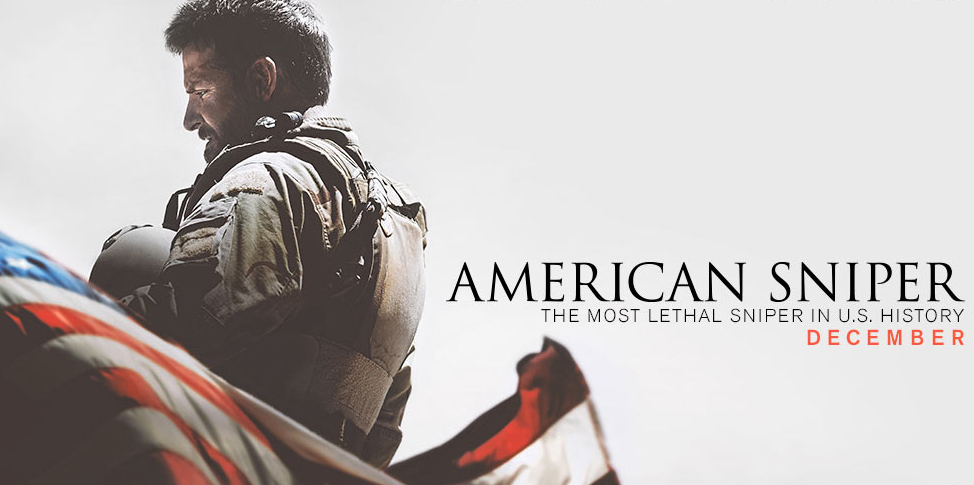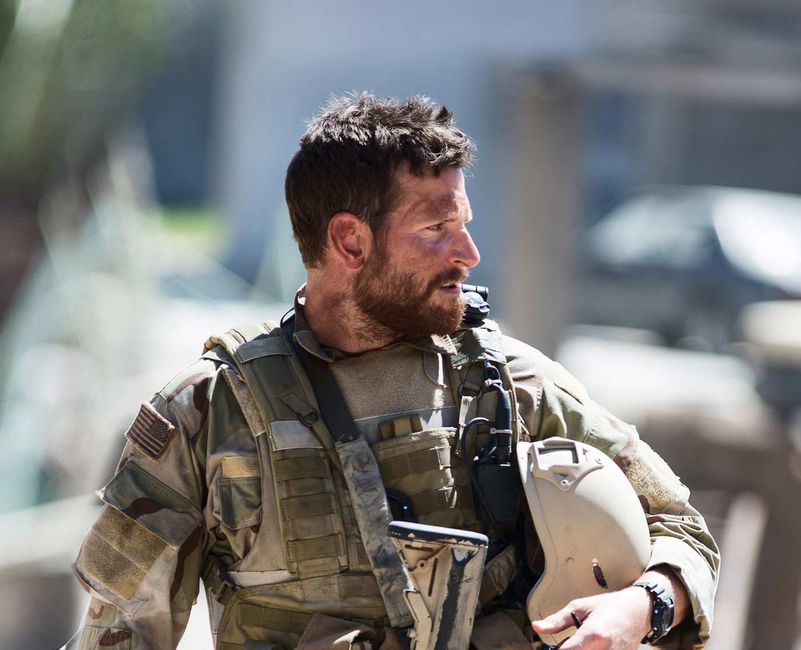Genre: War/Drama/Biopic
Premise: The story of Chris Kyle, the most lethal sniper in the history of the United States army.
About: The real life story and biography of Chris Kyle probably would’ve become a decent movie package no matter what. However (spoiler!), the unexpected shooting and death of Kyle the day after writer Jason Hall turned in his first draft, morphed the script into one of the hottest projects in Hollywood. Unknown writer Jason Dean Hall all of a sudden found himself with Steven Spielberg and Bradley Cooper on board. But then Spielberg dropped out, and it looked like Cooper might drop out too. Clint Eastwood to the rescue. Eastwood coming in was seen as a serious downgrade, considering his previous four films were all bombs. But in retrospect, the ultra-conservative and pro-war advocate was the best fit to direct the film. It certainly worked out at the box office, where the film became the biggest box-office shock since Lucy, with 90 million dollars (and an estimated 105 million over the Martin Luther King Jr. holiday). Movies that don’t have capes just don’t make money like this anymore. Especially over one of the slowest box office weekends of the year. So what the hell happened? Let’s take a look.
Writer: Jason Dean Hall (adapted from book by Chris Kyle, Scott McEwen, and James Defelice)
Details: 2 hours and 15 minutes running time.
For those who receive my newsletter (sign up here), you’ll remember I didn’t much care for this script. It was a first draft, but I was expecting more from a script that snagged Spielberg and Cooper (in retrospect, I doubt they even read the script – and were probably signing onto Kyle’s story based on the recent tragedy). The script felt “drifty,” with us watching Chris Kyle (our “American sniper”) stumble his way into a military career and then stumble his way through a bunch of sniper kills.
What bothered me was that there was no BUILD to the story. It just WAS. And while maybe that’s more realistic, more “true to life,” I found it dramatically boring.
Well, here’s the good news. They fixed a lot of the problems I brought up in the script. And you know what? The end result isn’t bad. That may sound like a backhanded compliment, but this is coming from someone who doesn’t like these movies at all. I wrestled a long time with paying 16 bucks to see this film, convinced I was going to be bored out of my mind. But I wasn’t.
For those who don’t know the story of Chris Kyle, he was a NAVY SEAL who served four tours in Iraq and became the most deadly sniper in U.S. military history. This story covers him going through all four of those tours, while occasionally coming home to raise a family. The main source of conflict in the story is that Kyle seems to be more comfortable on the battlefield than he does at home.
So let’s look at some of the changes that were made. Either through the screenplay itself or through Eastwood’s direction, a lot more emphasis is put on The Butcher in the final film, our main “villain” in the story. Why is this a big deal? Because it gives our screenplay FOCUS. If Kyle is just out there shooting random Iraqi after random Iraqi, racking up kills, we’re going to get bored.
But if we’re killing people to get closer to a villain, now the story has more purpose. The viewer can see the point of these killings, and they’re pulled in by the question, “Will Kyle get The Butcher or not?” Never underestimate the importance of a high-stakes question in your story. High-stakes questions create suspense, since the audience is forced to ask a question they want an answer to.
Another thing I liked that they did is they added a rival sniper. This may have been in the draft that I read, but if it was, it was only barely touched upon. Once again, by giving Kyle an adversary, we again create the same type of question: “Will he kill him?” This provides focus and suspense, as we’ll want to stick around to see if he kills the other sniper.
One of my biggest issues with the script was the fact that Kyle was always a million miles away from the action, perched up in his sniper den, shooting away, safe as can be. There was very little tension up there, except for when he had to make a tough decision or impossible shot, and there were only so many times you could do this.
What surprised me is that they just ditched the whole sniper thing for the second half of the movie. Well, maybe not ditched it entirely. But someone realized, “Hey, we need to put Kyle in some fucking danger or else this movie’s going to be boring as hell.” So Kyle just started joining teams infiltrating cities and was right there in the thick of things. This was a really good choice on their part.
Finally, I had issues with them not really exploring Kyle’s mindset when he was home. Eastwood actually puts a much bigger emphasis on this in the movie. Kyle is a distracted mess whenever he comes home and his inability to live a normal life, makes for a very complicated character exploration. This is exactly what I’m guessing Cooper was drawn to, and maybe it was even him who demanded more of it in the screenplay.
While I wouldn’t say Kyle was a fascinating character, there was something about his inability to cope with being a “legend” that made him compelling to watch. There’s a scene where a man approaches him in a gas station back in America and thanks him for how many lives he saved, and you can just see Kyle squirming to get the hell out of there.
With all this said, I thought this movie would be lucky to make 25 million when I first read it. And all weekend, I’ve been trying to figure out why I was so off on that estimation. I look back to an e-mail I received after I wrote the initial review from a man who lived in flyover country, and the crux of his e-mail was, “Carson, you don’t understand, this guy is a hero to everyone in the service.”
And I realized that this is a world that I just don’t understand. I didn’t grow up in the service. I didn’t grow up around anyone who actually joined the service. So there’s something to be said for not being able to predict what you don’t know.
Still, I’ve always operated on the assumption that the public doesn’t want to be bummed out when they go to the movies. They want to be entertained. And so seeing a sad movie about a sad man – I just couldn’t understand why anyone would want to experience that. However, I learned a valuable lesson. There are certain “truths” that trump other “truths” when it comes to the elusive box office formula. America LOVES their real-life heroes, especially ones who fight in the military. And seeing their story on screen trumps any resistance to being bummed out.
(Spoiler!) And you will be bummed out. This is a sad movie about a man who was never really comfortable with who he was, who ends up being killed as far away from the war as one can get. Seeing the real-life footage of people lined up along overpasses on the highway with American flags draped down, while Kyle’s body was driven to his funeral, it was powerful stuff. Maybe, had I seen that before I read the script, I would’ve realized just how big this movie was going to be.
[ ] what the hell did I just watch?
[ ] wasn’t for me
[x] worth the price of admission
[ ] impressive
[ ] genius
What I learned: I’m going to be paying a lot more attention to real-life hero stories from this point forward. If you have the rights to one of these stories or know of a real-life hero story, now would be a damn good time to write it.



